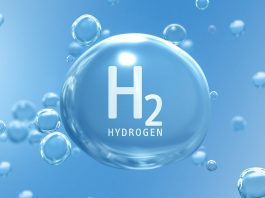A breakthrough technique using liquid metal to produce green ammonia could drastically cut carbon emissions associated with the global production of this essential chemical.
Researchers from RMIT University have developed a low-energy method that could pave the way for a sustainable green ammonia production process, which is vital for both agriculture and clean energy.
Ammonia’s dual role in food and energy production
Ammonia plays a crucial part in the global economy, primarily used in fertilisers to grow much of the world’s food supply.
It also serves as a critical player in the clean energy sector as a carrier for hydrogen, a promising alternative fuel.
Despite its importance, traditional ammonia production comes at a significant environmental cost. Current methods consume over 2% of the world’s energy and contribute nearly 2% of global carbon emissions.
The widely-used Haber-Bosch process, developed over a century ago, is highly energy-intensive, requiring extreme heat and pressure to split nitrogen and hydrogen into ammonia. However, new research offers a greener alternative, potentially revolutionising ammonia production.
Greener alternative reduces energy consumption
Led by Dr Karma Zuraiqi, a research fellow at RMIT University, the team has developed an innovative approach that slashes energy consumption and emissions.
Their method uses 20% less heat and requires 98% less pressure compared to the traditional Haber-Bosch process. The breakthrough findings demonstrate the effectiveness of this low-energy approach in producing ammonia without sacrificing efficiency.
“Ammonia production worldwide is currently responsible for twice the emissions of Australia. If we can improve this process and make it less energy-intensive, we can make a large dent in carbon emissions,” said Zuraiqi.
This new technique could significantly reduce the carbon footprint associated with ammonia production, offering a more sustainable solution to meet global demands.
Liquid metal catalysts: The key to efficiency
The RMIT team is at the forefront of research into liquid metal catalysts for various applications, including ammonia production, carbon capture, and energy generation.
Catalysts are materials that accelerate chemical reactions without being consumed in the process, and in this case, liquid metal catalysts have unlocked new possibilities for green ammonia production.
The researchers created ‘nano planets’, tiny droplets of liquid metal containing copper and gallium, which function as catalysts in the reaction.
These nano planets, with their hard crust and liquid core, efficiently break apart nitrogen and hydrogen to form ammonia.
The combination of copper and gallium proved to be more effective together than either metal used alone, with gallium facilitating nitrogen splitting and copper aiding in hydrogen breakdown.
“Copper and gallium separately had both been discounted as poor catalysts for ammonia production, yet together they do the job extremely well,” explained RMIT Professor Torben Daeneke.
This synergy between the two metals offers a cost-effective and abundant alternative to the precious metals, such as ruthenium, used in conventional processes.
Upscaling and future potential
While the traditional Haber-Bosch process is only feasible in large industrial settings, the RMIT team’s green ammonia method has the potential to be scaled for both large-scale and decentralised production.
This flexibility could lead to small-scale green ammonia production at renewable energy sites like solar farms, reducing transportation costs and emissions even further.
In addition to its applications in fertiliser production, this green ammonia technology could play a crucial role in the hydrogen economy.
Converting hydrogen into ammonia makes it safer and easier to transport. However, if ammonia produced through traditional methods is used as a hydrogen carrier, emissions could increase, counteracting the benefits of hydrogen as a clean energy source.
While the laboratory results are promising, the next challenge is scaling the green ammonia production method for industrial use. The team is now working to design a system that can operate at even lower pressures, making it more practical for a variety of industries.
This innovative approach to green ammonia production could be a game-changer in reducing emissions and driving the shift toward cleaner energy sources, making the future of ammonia both greener and more sustainable.









